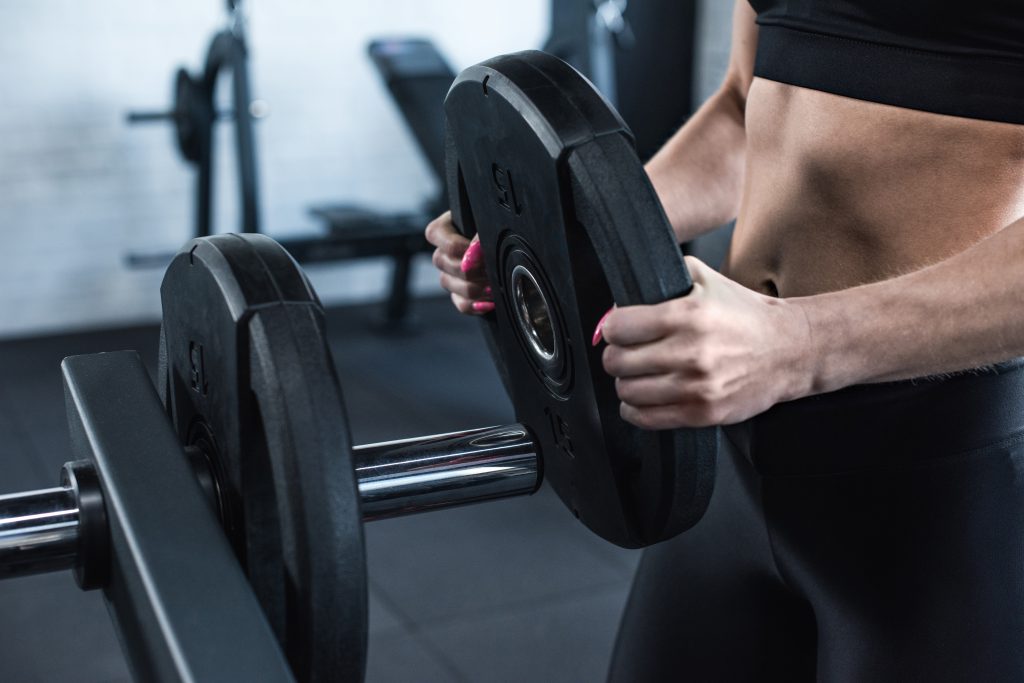You can’t go more than a few clicks on the internet before you inevitably come across some coach or trainer discussing the merits of positional breathing and how it can help improve performance in the weight room (and on the field).
(👆👆👆 I guess this depends on what part of the internet you peruse…BOM, CHICKA, BOM BOM 😉 😉 😉 )
Nevertheless, if you’re someone who geeks out over the human body and movement in general “positional breathing” is a term you’ve definitely come across.
And you likely still aren’t understanding it’s relevance.
I have a treat for you today. Dr. Michelle Boland (a Boston based strength & conditioning coach and one of the smartest people I’ve ever met) was kind enough to offer to write on the topic for this website.
Enjoy!

Positional Breathing: The Implementation of Training Principles
Note From TG: For a bit of an “amuse bouche” on the topic of positional breathing I’d encourage you to check out two posts I wrote on the topic HERE and HERE.
Identify
Our role as fitness professionals is to determine what is important for our clients. In order to do so, we need to identify what is important, formulate principles, and then follow through with implementation.
A way to identify and formulate what is important to us as trainers, is to create principles. Principles are simply what you believe in and what you teach your clients. Principles serve as a hierarchy of reasoning for your training methods, which include your choice of exercises, organization of training sessions, program design decisions, and communication strategies.
In this article, I am going to review my first two training principles:
- Training Principle 1: All movement is shape change (influence from Bill Hartman)
- Training Principle 2: Proximal position influences distal movement abilities
Formulate
Movement is about shape change.
We change shapes by expanding and compressing areas of the body.
Movement will occur in areas of the body that we are able to expand and movement will be limited in areas of the body that, for some reason, we have compressed. The ability of an athlete to transition from expanded positions to compressed positions informs their ability to change shape and express movement.
Movement occurs in a multitude of directions depending on both position and respiration. Certain positions will bias certain parts of the body to be able to expand more freely, allowing increased movement availability. Respiration can further support the ability to expand and compress areas of the body, as an inhalation emphasizes expansion and an exhalation emphasizes compression.
(👇👇👇 Just a small, teeny-tiny taste of importance of positional breathing 👇👇👇)
Position selection is my foundation of exercise selection.
Positions such as supine, prone, side lying, tall kneeling, half kneeling, staggered stance, lateral stance, and standing can magnify which areas of the body that will be expanded or compressed. Additional components of positions can include reaching one arm forward, reaching arms overhead, elevating a heel, or elevating a toe. Furthermore, pairing phases of respiration within these positions will further support where movement will be limited or enhanced.
The position of the proximal bony structures of the body, such as the rib cage and pelvis, can greatly enable or restrict movement. Positional stacking of the thorax and pelvis provides an anchor for movement. Respiration then provides the ability to create expansion in the thorax and pelvis, thus providing expansion areas of the body, within joint spaces, allowing our limbs to express pain-free movement.
Lifting heavy weights can often compress areas of our body and reduce our ability to expand and rotate through our trunk and hips, limiting movement, and negatively affecting our ability to perform. Remember, expansion begets movement freedom, so adding positional breathing work or pairing movement with respiration can create opportunities for expansion.
Implement
Where is a good place to start with positional breathing work?
Start by thinking about what you already do.
Then, apply your new lens of where you want movement to occur.
Finally, label the positions of the exercises and pair respiration within those movements. Pair an inhalation when you want to enhance expansion and an exhalation when you want to enhance compression. Here are a few examples of how I implement my two training principles into exercise selection. Movement within each example can be supported or limited with changes in position, respiration, or execution.
1. Supine Reach
The supine position is combined with a bilateral arm reach forward with the intention to expand the upper thorax during inhalation. The position can also be used as a tool to teach stacking the thorax over the pelvis by cueing a hip tuck and soft exhale to move the front side of the ribcage downward. Our “stack” IS the set-up position for your main loaded, lift exercises (squat, deadlift, etc).
Check out how the inhalation expands the upper thorax and the exhalation creates compression.
Now you will not be able to take your eyes away from those two movement strategies.
2. Staggered Stance “Camporini” Deadlift
The staggered stance position is going to magnify the expansive capabilities of the lower, posterior hip of the back leg. The staggered stance position allows you to use the front leg to push back to the side of the back leg and align the pelvis and thorax back and to the side of the back leg.
The opposite arm reach allows you to transition the weight to the back leg. The expansive capabilities can be enhanced in the posterior hip with an inhale during the hip movement backwards (hinging).
3. Low Cable Step-Up
The staggered stance position puts the hip of the elevated leg in flexion (expansive) and the hip of the leg on the ground in an extension (compressive) biased position.
The addition of an opposite arm cable hold expands the backside of the upper back (avoid resisting the cable). The posterior hip of the elevated leg will compress as the individual pushes their foot into the ground and moves against gravity to perform the step-up.
At the bottom position, expansion can be enhanced in the posterior side of the flexed hip and posterior side of the arm holding the cable during an inhalation. Coaching cues may magnify expansion and compression within areas of the body by pairing respiration within phases of the exercise. Try inhaling at the bottom position and exhaling during the movement/step-up.
4. High Hip Reverse Bear Crawl
The bear crawl exercise is performed in a prone position. The additional component of the high hips and reverse direction promotes expansion in the upper thorax and posterior hips. You can coach continuous breathing through the movement or pause at certain points to inhale.
This is a fantastic warm-up exercise!
5. Tempo Squat Paired with Respiration
The squat starts in a standing position.
The assisted squat will also include a positional component of both arms reaching forward (same as goblet squat, zercher squat, or safety bar squat) which encourages the ‘stack’ position of the thorax and pelvis. The assisted squat is an example of turning positional breathing work into fitness. The squat movement requires both expansive and compressive capabilities within various phases of the movement in order to be able to descend and ascend against gravity.
The exercise can be used to teach people to change levels with a stacked, vertical torso. As a general notion, inhale down and exhale up.
6. Medicine Ball Lateral Stance Weight Shift Load and Release Throw
The exercise is performed in a lateral stance position.
Here, we are adding fitness with an emphasis on power, to positional breathing work!
Pair an inhalation with pulling the medicine ball across the body (transitioning weight from inside to outside leg) to bias expansion of the posterior hip of the outside leg. Then pair an exhalation with the throw to bias compression, exiting the hip of the outside leg.
This exercise also encourages rotational abilities and power through creating expansion and compression in specific areas of the body. For example, if you want to promote right rotation, you will need right anterior compression, right posterior expansion, left posterior compression and left anterior expansion abilities.
Conclusion
The use of positional breathing activities can improve our abilities to move with speed, free up range of motion at the shoulders and hips, rotate powerfully, and move up and down efficiently. My training principles are derived from this concept. My specific strategies are implemented through exercise selection, cueing, teaching, and pairing respiration with movement phases.
The ‘stacked’ position emphasizes a congruent relationship between the rib cage and pelvis (thoracic and pelvic diaphragm) and I believe it can serve as a foundational position to support movement. I want to thank Bill Hartman for exposing me to this lens of movement.
Implement these strategies with your clients and you’ll discover that positional breathing work WILL help your clients squat, hinge, run, rotate, and move better.
Principle Based Coaching
A strategy such as positional breathing work for better client movement is only as good as your ability to implement and communicate it with your clients. We become better at implementation and communication through analysis and development of our PRINCIPLES.
If you want to learn more about training principles, how to implement principles into your coaching, and the use principles to improve your continuing education, Join me Thursday, October 1st at 2:00pm EST for a FREE Webinar
In this webinar, we will take a step back and learn the skills to formulate principles, make new information useful, AND IMPLEMENT information. At the end of the webinar you will know how training principles can be used to:
- Make new information useful to YOU, YOUR clients, and YOUR business
- Clarify your coaching decisions
- Develop a more pinpointed coaching eye
- Plan more effectively to get your client results
- Gain confidence in your abilities and formulate your own coaching identity
About the Author
Michelle Boland
- Owner of Michelle Boland Training
- PhD in Exercise Physiology
- Instagram @dr.michelleboland
Link to FREE Webinar: https://michelle-boland-training.mykajabi.com/coachingwebinar




